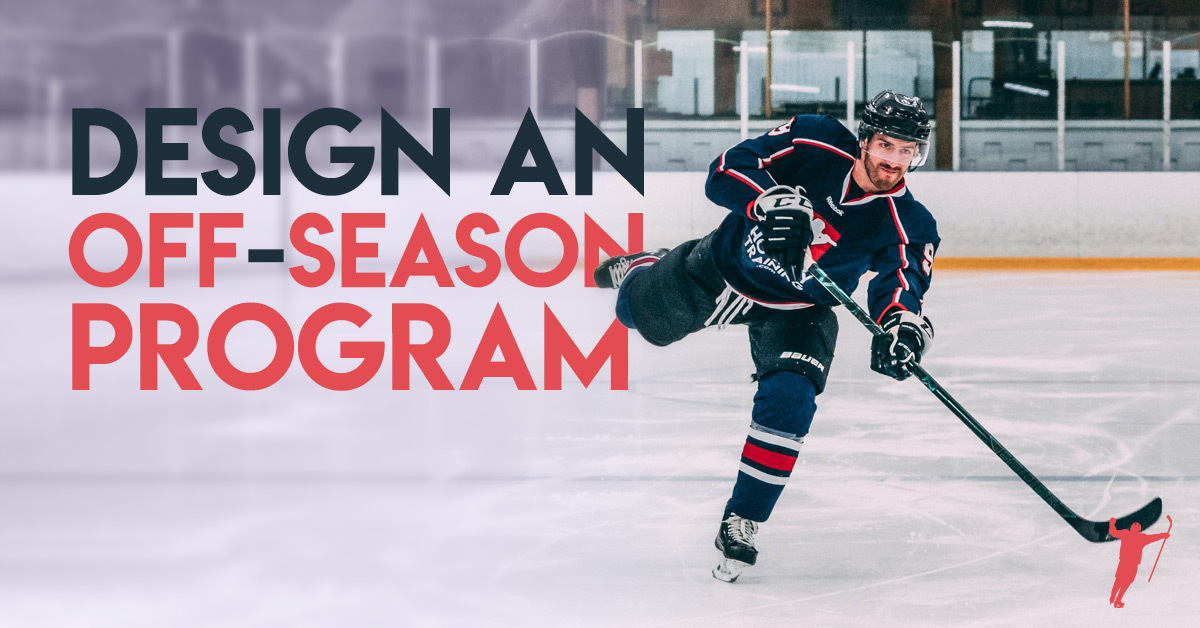In this article, I will show you the most cutting-edge ways to design an off-season hockey training program.
There are a lot of “big picture” and “small picture” phase goals and periodization strategies that need to be considered.
Because these are such big topics in sports science, I have recorded two professional presentations for you to view so that the lessons will be easier to understand and remember.
With these lessons in mind, you can be 100% confident moving forward with your program, knowing that it has a hockey-specific approach that’s guaranteed to get great results.
For Parent of Youth Hockey Players:
Youth Off-Season 2020 Program – learn more here.
For Players Ages 15+:
Off-Season Domination 2020 Program – learn more here.
Expanding on the Presentation Material
A well-designed off-season hockey training system is typically composed of four to seven distinct training phases that logically and progressively increase your performance during the off-season.
Each phase can and should have its own goal, but it should always work within the long-term strategy of the entire off-season.
For example, as noted in the presentation, this is how I have the elite hockey players here at Hockey Training execute their off-season:
Regeneration Phase: Post-season (1–2 weeks)
Phase 1: Bulletproof Structure (3–4 weeks)
Phase 2: Hockey Horsepower (3–4 weeks)
Phase 3: Functional Hockey Movement (3–4 weeks)
Phase 4: Explosive Speed (3–4 weeks)
Phase 5: Peak Speed Capacity (3–4 weeks)
Phase 6: Hockey Performance Amplifier (1–2 weeks)
*The variance in phase length is adjusted based on how long an individual has to execute their off-season—some athletes have a full six-month off-season whereas other hockey players may only have 1–3 months to make fast gains.
Strategy and Tactics
As you can see, each phase has its own emphasis, but it is never at the expense of what the long-term vision is for the entire off-season. In programming, this is known as the difference between strategy and tactics.
Arguably the biggest mistake I see among coaches in their approach toward the off-season is their confusion between strategy and tactics.
Strategy is big-picture thinking; it’s the art and science behind your coaching approach. The strategy is the glue that holds each phase together in a logical, progressive way so that you are always getting better results.
Tactics, on the other hand, are the specific tools you use at a particular time for a specific reason. Tactics represent the unique variations you’re making regarding exercise selection and overall volume/intensity/frequency of the program design to accomplish the given phase goal.
Put simply, tactics accomplish a particular goal, and strategy is a long-term plan to becoming an all-around better hockey player by the end of the off-season. In other words, your strategy is your overall battle plan for the war, and the tactics are your surprise attacks against the opponent.
I have hockey players go through each of the above training phases with particular goals attached to them (tactics) while at the same time implementing my Peak Speed Formula in the background (strategy) to ensure linear and progressive results all off-season long.
For the perfect off-season, you need to see the forest (strategy) and the individual trees (tactics) to get the best results.
My proprietary Peak Speed Formula glues everything together so that linear progress can be expected in all departments throughout the off-season, even though each phase has its own particular emphasis of importance.
Off-Season Phase and Goal Progressions
To arm you with even more information on exactly how I set things up from both a strategic and tactical perspective, here’s a deeper look at how I structure each phase so you can see the true transition from General Physical Preparedness (GPP) to Special Physical Preparedness (SPP) across each phase.
*Note: the phase and goal progressions below are identical for both youth and adults. Same goals, different applications.
REGENERATION PHASE: POST-SEASON ACTIVE RECOVERY
- Optional athlete assessment profile
- Active recovery post-playoffs/season
- Improve mobility restrictions
- Improve structural imbalances
- Improve strength imbalances
PHASE 1: GPP
- Emphasize total body strength and hypertrophy gains
- Develop aerobic conditioning base
- Improve mobility restrictions
- Improve structural imbalances
- Improve strength imbalances
PHASE 2: GPP
- Emphasize total body strength and hypertrophy gains
- Develop aerobic conditioning base
- Introduce anaerobic conditioning work
- Improve mobility restrictions
- Improve structural imbalances
- Improve strength imbalances
PHASE 3: GPP/SPP HYBRID
At this point, mobility/structural/strength imbalance issues have been fixed.
- Emphasize total body strength and power output
- Maximize aerobic conditioning base
- Amplify anaerobic conditioning work
- Introduce speed training
- Introduce SPP component to convert “gym strength” into functional hockey strength
PHASE 4: SPP
At this point, the aerobic conditioning base is strong enough that we can back off the training volume prescription in this department to allow more volume to be placed on hockey-specific conditioning, speed, and agility programming.
- Emphasize total body strength and power output
- Introduce power–endurance component
- Maximize anaerobic conditioning work
- Maximize speed training
- Maximize SPP component to convert “gym strength” into functional hockey strength
- Introduce mental and physical agility programming
PHASE 5: SPP
- Maximize total body power endurance
- Maximize anaerobic conditioning
- Maximize speed training
- Maximize mental and physical agility programming
- Maximize SPP outputs
PHASE 6: TAPER AND PEAK
Athletes undergo a brief training volume tapering period to peak their hockey-specific performance and enter the next season a completely different hockey player.
- Peak total body power endurance
- Peak anaerobic conditioning
- Peak speed training
- Peak mental and physical agility programming
- Peak SPP outputs
Final Thoughts
Watching the presentation of your choice in combination with reviewing the above off-season progression will give you an incredible amount of information that you can implement immediately to make this year your best year ever.
If you found the above information insightful but still want a complete version created by a professional, make sure you check out my brand new Youth Off-Season and Off-Season Domination programs.
And if you’re a coach yourself looking to design programs like this from scratch in a customized way, the Hockey Training Specialist course would be perfect for you.


Hey Dan, Karim from Malaysia here. In Kuala Lumpur, we don’t really have structured hockey seasons and with the pandemic going on, we all know that there’s is little to no hockey at all during this time. Since this will be going on for at least a few months, I’m trying to work on creating a hockey workout program for myself to incorporate strength, speed, agility, conditioning, and hockey skills all at once but after all the research I’ve done, I’m still confused on how to do so. I would really appreciate it if you give an opinion and advice about it. Thanks.
Hey Karim,
Although this is a great question, it’s a super big one to answer! However, I think the root of your confusion comes from trying to create a workout program with ALL of those goals at the same time.
There’s an old Russian proverb I love and it goes “If you try to catch two rabbits at once, you will catch neither” — It essentially represents that it’s best to only focus on one thing at a time.
So instead of trying to create a program with all of that, you should create an off-season with all of that and structure your phases in a way where you focus on one major thing at a time (like I discuss in my video lectures above).
If you want a done for you program to accomplish everything you need that I created myself, check this out: https://www.hockeytraining.com/osd20-program
If you want to try and do this thing yourself, I’d recommend using the above information in this article and combine it with the information in this article: https://www.hockeytraining.com/how-to-start-off-season/
how can I reduce this plan into 4 months?
and could I use your videos on YT on each tactic?
thanks
Hey Lam,
In the new Off-Season Domination ’21 programs, I offer a customizable scheduling document. What I do to shorten the length of an off-season is not eliminate phases, but, simply reduce the time spent at each phase (i.e. 2-3 weeks rather than 4). Essentially, you would shorten your phase lengths and just ensure that you still deload every 8 weeks or so.
You could use YouTube to get an idea on how I train, but you’d have to piece a lot of it together yourself as there is not a video on each individual phase/tactic. However, it would be a great place to start 👍